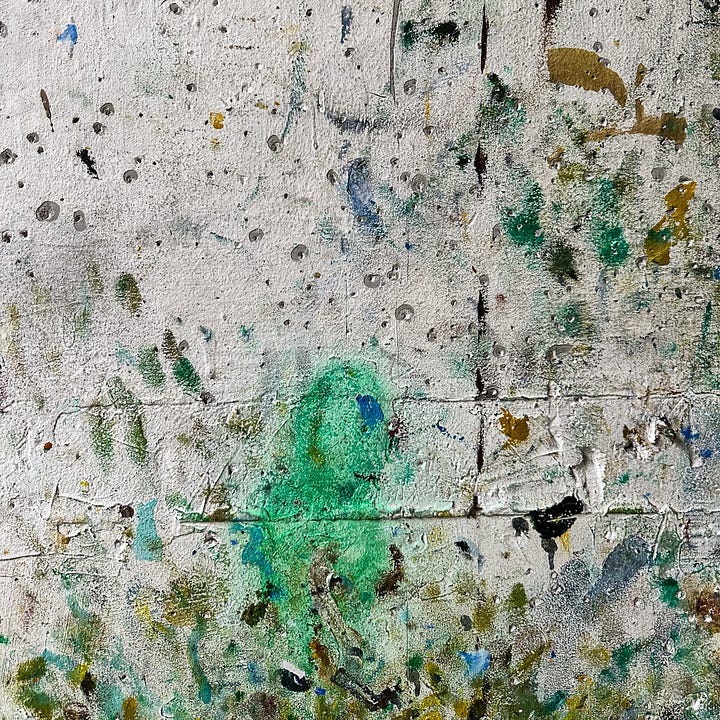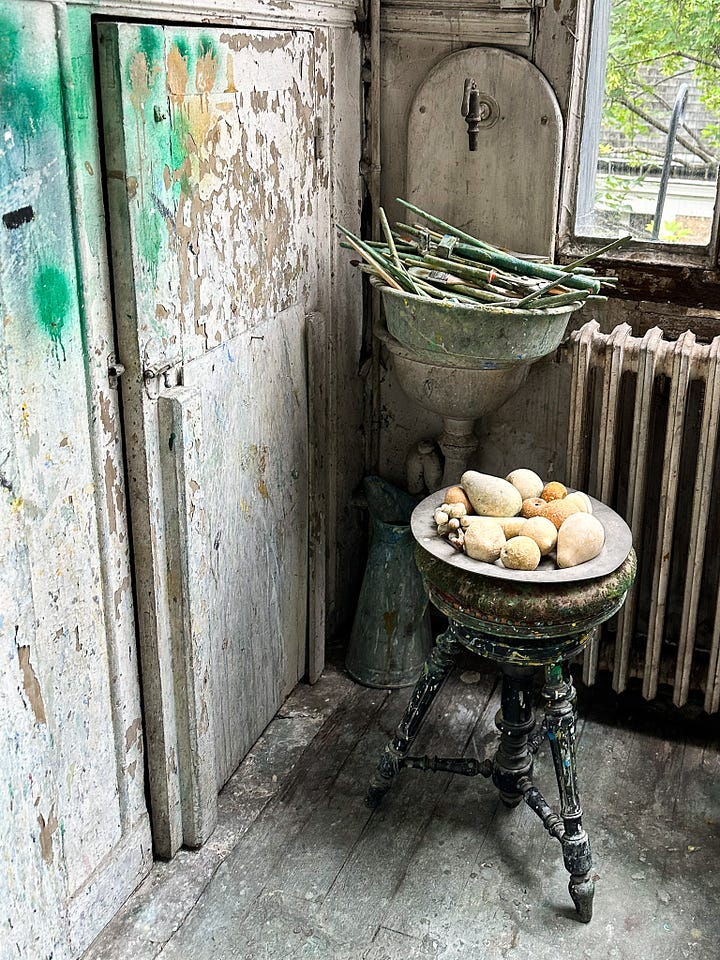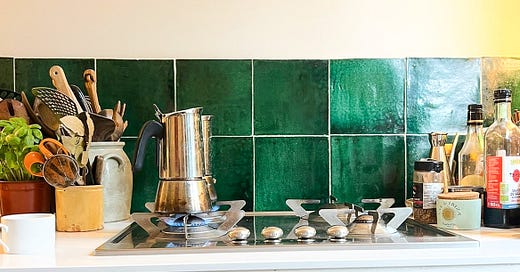Every morning before painting we gathered in the kitchen next to the studio. The space belonged to an artist friend of our teacher Jessie,1 whose family has owned the space since 1945. There were layers of brush strokes on the walls in the studio, years of them, canvases leaning against the walls, and old brushes in a weathered, stone sink. Years of painting, sculpting, and art-making, everywhere. Through the studio was a bedroom, and beyond the bedroom was a short corridor with books and dishes stacked on shelves. Above the shelves was a still life depicting a teapot, a bowl and a vase, objects still in the room on the shelves below. History and objects and art all together, living on. Off this corridor was the kitchen.
It was a rainy week in Paris; morning light was low and warm in the kitchen. We brought wooden chairs in from the studio and sat around a little white table. There were croissants, apricots, strawberries, and pain au chocolat. Jessie stood at the stove making pots of espresso. We’d talk about what we learned the day before, and what we’d gotten up to in the evenings (for my mom and me that was usually lentil salad with fat slices of tomatoes and a spoonful of hummus at the kitchen counter, or maybe a crisp and lacey folded crêpe with goat cheese and honey from the crêperie next door). Then we chatted about what was planned for the day ahead.
One morning Jessie brought brioche to eat toasted with butter and apricot jam. On the counter was a vintage Moulinex toaster. I had never seen one like that before: a two-sided cross section of a toaster, insides revealed, with levers on either side that held slices of bread against hot electric wires - a toaster that would likely be illegal in North America but in France, a practical tool for toasting and teaching children not to touch red hot elements.2
We had a toaster oven when I was little. The same one now sits on the teal blue formica counter at my parent’s cottage, with its small horizontal metal rack behind the glass door and a counterclockwise dial to set time and strength. It toasts two slices of bread at a time in its little oven environment, and when they’re ready, the dial dings! then shuts itself off. The ding! was the sound of my childhood mornings, along with Don Connolly’s voice chatting easily about traffic and local news on CBC radio’s Information Morning.
We now have a Dualit toaster with a gentle lowering mechanism and a manual pop-up function. My son Charlie and I began researching toasters when we noticed the handle on our little two-slicer launching into the air whenever toast popped up. One morning I found the handle in our yukka fern. It was time for a new one. We decided on the Dualit after watching a Youtube video of guys on the factory line, hand spraying colours onto toasters in the Dualit factory in Crawley, West Sussex.3 The company has been around since the early 1950’s; in the 1970’s a graduate from the Royal College of Art and Design joined the team. I knew there were designers at the helm; the Swedish interior designer Beata Heuman has a tiny grass-green shelf in her Swedish kitchen4 just for her two-slice Dualit. We decided on a white and chrome 4-slice model because it’s sleek but nostalgic, and feeds a crowd, all at once. But I miss the ding of a toaster, the pop up action, the radio, the sound of mornings. We’re all plugged into our own experiences in the mornings now, with AirPods and podcasts in our ears. Sometimes I ask our google speaker to play a song, just to pull us together.
Anyway, that morning in the studio in Paris we walked into the kitchen just as Jessie was scraping burned crumbs from the surface of a slice of brioche. It was a tall order, toasting sweet, buttery bread that burns easily when heated, especially in an open-faced toaster without a timer or an automatic shut-off. She laughed as she stood and scraped - an economical action we rarely see anymore. My mother sat down beside her and said, “that was the sound of my childhood mornings. I always woke up to my dad scraping a piece of toast. It makes me feel at home.” And then we ate it, covered in butter and apricot jam.







I worked in a studio owned by a French chef and stylist recently. She would leave us to our work for the day in her superbly equipped kitchen creating for a baking book. With delicious artisan bread on the shelf after being shot we all developed a hankering for toast but couldn’t find the toaster. A quick call to said chef and an appliance we’d overlooked, because none of us recognized it, was located….a moulinex manual toaster. A few burnt slices later and a few photo chefs having learnt the art of slowing down and toast meditation we inhaled the most perfectly browned toast we’d ever eaten.
I was raised with an old drop-sided toaster. You always had to watch them, but the toast was wonderful.